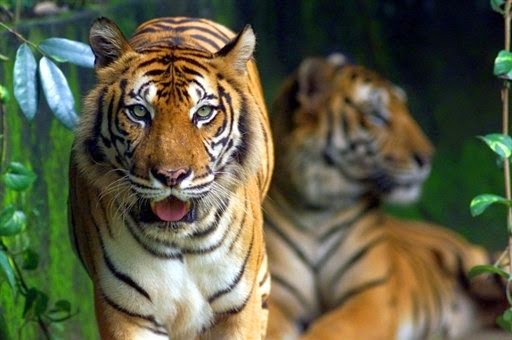
Renowned Wildlife Photographers Collaborate to Support Tiger Conservation Initiatives in Their Natural Habitat

### _”Remembering Tigers”: A Passionate Appeal for Conservation Through the Lens of Photography_
A formidable new instrument has surfaced in the battle to save one of the world’s most emblematic and endangered species — the tiger. Through stunning photography, the newly published coffee table book _”Remembering Tigers”_ showcases the elegance and grandeur of these magnificent creatures, while simultaneously enhancing awareness about their vulnerable existence in nature. This project forms part of the highly lauded _”Remembering Wildlife”_ series, uniting a collection of 88 striking images for a significant purpose: safeguarding tigers.
### Striking Imagery for a Purpose
_”Remembering Tigers,”_ the ninth installment in the _”Remembering Wildlife”_ series, serves not only as a visual spectacle but as a rallying cry. It features contributions from some of the globe’s most esteemed wildlife photographers, including Art Wolfe, Jonathan & Angela Scott, Greg du Toit, Sergey Gorshkov, and Sascha Fonseca, among others. These talented individuals have graciously lent their photography to aid tiger conservation initiatives.
The photographs, showcasing everything from Bengal tigers in India’s Ranthambhore National Park to the elusive Siberian tigers of Russia’s Far East, are truly breathtaking. Each page of the book narrates tales of majesty and fragility, drawing viewers into the tiger’s vanishing realm. The large-format images encapsulate moments of stealth, strength, and solitude — defining qualities of the tiger.
With fewer than 5,500 tigers remaining in the wild, confined to a mere 10% of their historical habitats, this book stands as a crucial reminder of what may be lost if immediate conservation actions are not implemented. All proceeds from book sales are allocated to tiger conservation initiatives, making it a purchase that not only pleases the senses but also contributes to the ongoing efforts to preserve these regal beings.
### A Crucial Call to Action
Margot Raggett, the creator and producer of these distinctive _”Remembering Wildlife”_ publications, underscores the urgent situation of the tiger population. “It’s frequently cited that there are more tigers in captivity in the U.S. than there are left in the wild,” Raggett remarks, presenting a stark reality regarding the species’ future. “Tigers serve as an indicator of ecosystem health. For every tiger safeguarded in the forest, there are plants, trees, insects, birds, and other mammals that benefit.”
Despite strides made to combat poaching, illegal wildlife trade, and habitat degradation, tigers remain on the edge of extinction. Their populations have drastically declined due to expanding human settlements, the unlawful hunting of tigers for traditional medicine, and widespread hunting of prey species for bushmeat. Additionally, retaliatory killings following tiger confrontations with humans and livestock persist, jeopardizing the already fragile existence of these large cats.
While some regions have experienced a slight uptick in tiger numbers due to conservation efforts, Raggett’s poignant message is clear: the time to act is now more than ever.
### The Significance of Photography in Conservation
Photography has long been a vital asset for conservation, but projects like _”Remembering Tigers”_ enhance its impact. By providing an intimate view into the lives of these elusive felines, these images do more than archive; they motivate. As Valmik Thapar, a prominent tiger conservationist and author who penned the foreword for the book, expresses: “I hope _Remembering Tigers_, with its stunning visuals, ignites a passion in its viewers and inspires them to reach new heights in ensuring this magnificent predator continues to roam our planet.”
In truth, images possess the ability to evoke feelings that words often cannot. They visually engage audiences, drawing focus to the urgency of conservation by illustrating both the splendor of the natural world and the dangers it confronts. For some spectators, witnessing these extraordinary cats through the photographer’s eye may trigger a desire to take action — be it through direct financial support for conservation or by raising awareness about the tiger’s struggles.
### Tigers: An Indicator of Ecosystem Wellness
The importance of tigers within their ecosystem cannot be overstated. As apex predators, they keep the populations of prey species in check, assisting in sustaining the balance of nature. Their existence in the wild symbolizes a healthy environment, which in turn fosters countless other species sharing their habitat. Tigers require expansive territories with plentiful prey, meaning that wherever tigers flourish, biodiversity tends to be rich and varied.
When conservation efforts focus on tigers, they inadvertently promote the preservation of a wide array of biodiversity. Safeguarding tiger habitats from deforestation and poaching guarantees that many species, from the tiniest insects to large herbivores, can continue to thrive in one of the world’s most delicate ecosystems.
### The Promise of Tigers’ Future
There exists a cautious hope for the future of tiger conservation. Nations like India,